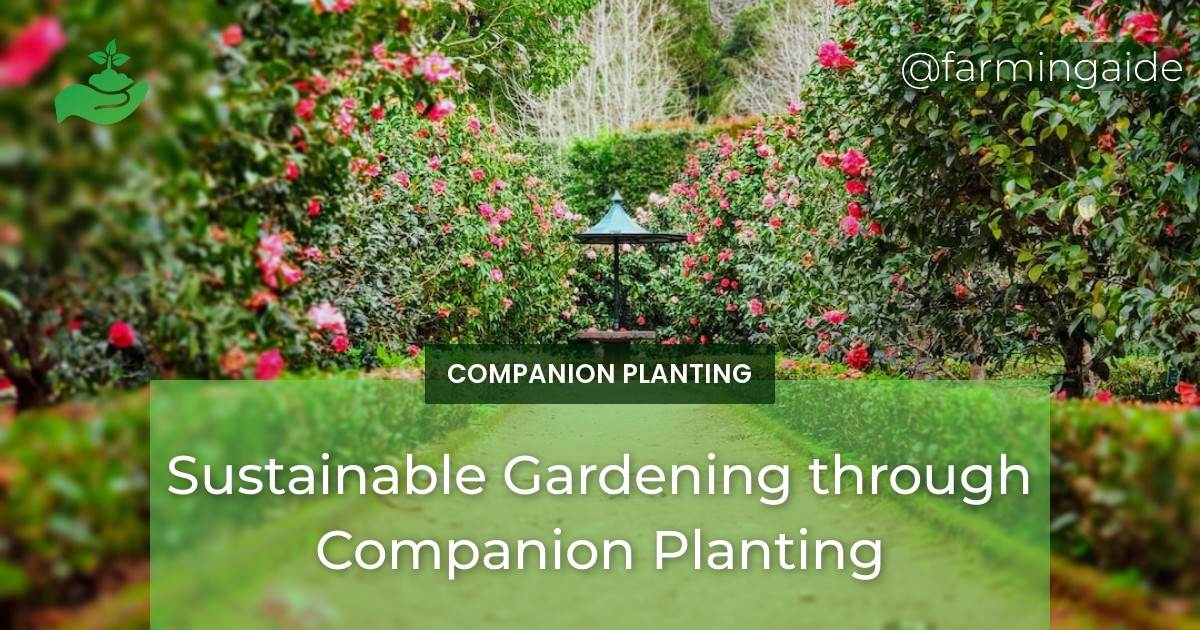Sustainable gardening is a practice that aims to minimize the negative impact on the environment while still producing healthy and abundant crops. It involves using sustainable methods such as composting, natural pest control, and crop rotation to maintain the health of the soil and plants. One effective way to achieve sustainable gardening is through companion planting. This method involves planting different crops together to create a mutually beneficial relationship. Not only does it promote sustainability, but it also enhances the overall health and productivity of the garden. In this article, we will explore the concept of sustainable gardening through companion planting and how it can benefit both the environment and the gardener.
Sustainable Companion Planting
Sustainable companion planting is a method of planting different crops together to create a symbiotic relationship that benefits both plants. This practice has been used for centuries by indigenous communities and is now gaining popularity among modern gardeners. The key principle behind sustainable companion planting is to create a diverse and balanced ecosystem in the garden. By doing so, it reduces the need for chemical fertilizers and pesticides, making it a more sustainable and eco-friendly approach to gardening.
Companion planting for sustainability involves selecting plants that have complementary characteristics and can support each other’s growth. For example, some plants have natural pest-repelling properties, while others attract beneficial insects that can help control pests. By planting these crops together, it creates a natural pest control system, reducing the need for harmful chemicals.
The Benefits of Sustainable Companion Planting
There are numerous benefits to using sustainable companion planting in your garden. Some of these include:
- Improved soil health: Different plants have different nutrient requirements. By planting a variety of crops together, it helps to maintain a balanced nutrient level in the soil, reducing the need for synthetic fertilizers.
- Natural pest control: As mentioned earlier, companion planting can help control pests naturally, reducing the need for chemical pesticides.
- Increased pollination: Some plants attract pollinators such as bees and butterflies, which are essential for the reproduction of many crops. By planting these crops together, it increases the chances of successful pollination.
- Maximized space: Companion planting allows for efficient use of space in the garden. By planting crops with different growth habits together, it maximizes the use of vertical space and can increase overall yield.
- Better taste and flavor: Some plants, when grown together, can enhance the taste and flavor of each other. For example, planting basil with tomatoes can improve the flavor of the tomatoes.
Companion Planting for Sustainability
When practicing companion planting for sustainability, it is essential to consider the specific needs and characteristics of each plant. Here are some tips to keep in mind when planning your companion planting garden:
- Choose plants that have similar water and sunlight requirements.
- Plant tall crops next to shorter ones to provide shade and wind protection.
- Rotate crops each season to prevent nutrient depletion and reduce the risk of disease.
- Plant herbs and flowers among vegetables to attract beneficial insects and repel pests.
- Avoid planting crops from the same family together, as they may compete for nutrients and increase the risk of disease.
Examples of Sustainable Companion Planting
There are many different combinations of companion plants that can be used in a sustainable garden. Here are a few examples:
- Tomatoes, basil, and marigolds: Basil repels pests that can damage tomatoes, while marigolds attract beneficial insects that prey on tomato pests.
- Corn, beans, and squash: Known as the “Three Sisters,” this combination is a traditional Native American planting method. Corn provides support for the beans to climb, while the beans add nitrogen to the soil. Squash acts as a natural mulch, suppressing weeds and retaining moisture.
- Lettuce, onions, and carrots: Lettuce provides shade for the onions and carrots, which prefer cooler temperatures. Onions also repel pests that can damage carrots.
How Does Soil Quality Impact Sustainable Gardening through Companion Planting?
The role of soil in companion planting is crucial for sustainable gardening. Healthy soil provides a supportive environment for diverse plant species to grow together, benefitting from each other’s natural properties. Good soil quality helps maintain a balanced ecosystem, improves nutrient availability, and enhances overall plant health, leading to successful companion planting.
Conclusion
Sustainable gardening through companion planting is a simple yet effective way to promote sustainability in your garden. By creating a diverse and balanced ecosystem, it reduces the need for harmful chemicals and promotes the health and productivity of your plants. With careful planning and consideration, you can create a sustainable garden that not only benefits the environment but also provides you with healthy and delicious crops. So why not give companion planting a try in your garden and see the benefits for yourself?
RELATED ARTICLES:


